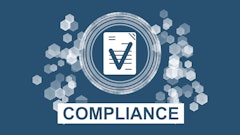
As a business executive, you know better than anyone else what is required to make your company successful and why different requirements are needed for each organization. It’s a new world to navigate now, one that comes with many considerations about how to safely reopen businesses that have slowed or stopped as a result of the Coronavirus disease (COVID-19). While the pandemic has been quite a wake-up call on many levels, eventually businesses, employees and suppliers can return to our daily lives stronger and more knowledgeable.
It’s more important now than ever to ensure the safety of workers returning to the job in the wake of the pandemic. Considerable thought and planning are required while considering areas ranging from physical safety for workers to building/facility management. Another extremely critical aspect of getting back to work is making sure your supply chain is as protected from risk as possible.
Getting people back to work
Let’s first consider how first to bring workers back onto the job. Here are six essential sets of tasks to undertake prior to that first employee or contractor stepping back onto your work site:
§ Prepare the work site or building
This includes tasks such as initial deep cleaning, the creation of cleaning plans for the future, pre-work return inspections and checks of all mechanical systems. Employees must feel secure in returning to work and a well-thought out plan for maintaining the worksite or building will help them to feel safe.
§ Prepare the workforce
Some of the key questions to be answered prior to returning work include exactly which employees will return? How will management communicate with those workers? How can you plan to mitigate employee anxiety?
§ Develop and share access control protocols
Determining who can access your workplace is a critical job to keep the business moving, an organization also needs to have clear protocols for the reception area as well as shipping and receiving. Determining visitor policies prior to reopening is almost as important as making sure the company’s policies are clearly and broadly communicated throughout the company.
§ Social distancing plan
Although we are still learning about COVID-19, we do know social distancing can play a definite role in reducing the transmission of the virus. However, social distancing creates other considerations like schedule management, how to safely and efficiently reduce density, changing of office traffic patterns, etc.
§ Day-to-day cleanliness
The need to maintain a clean and virus-free environment is paramount. Companies must figure out the best way to keep the workspace clean through regular cleanings. Other things to consider are high touchpoints like doors, window handles, kitchen and desk items, etc. Adjusting the employee work schedule can minimize illness by reducing crowding in common work areas.
§ Communicate transparently and frequently
Most people respond positively to changing circumstances and situations when they feel they are getting all of the information they need. Some people may well be afraid of returning to work, so putting in the time to provide all relevant knowledge can help to smooth the way to an easier, more comfortable return to work. Be as transparent with employees and suppliers as possible. It’s not a one-time effort, though – plan to communicate regularly and get feedback via surveys or other outreach efforts.
Protecting the supply chain
Protecting the integrity and strength of your supply chain is a process concurrent to bringing workers back and reopening businesses. We’ve all seen what happens when supply chains are interrupted – essentials are missing from store shelves, people begin experiencing food insecurity and businesses are negatively impacted.
Post-COVID-19, key supply chain risk management strategies include assessing every part of the supply chain in a risk-based supplier evaluation process. Identify mutual dependency fears and understand supplier dependencies a level down—are the suppliers of my suppliers ready? Determine direct back-up supplier relationships that would mitigate risk if your first-line suppliers are unable to support your business.
Many organizations will need to completely review and rethink their supply chains to ensure a safe return to work. Critical suppliers – especially single suppliers – should be reviewed for overall resilience, including financial health, appropriate quality controls, health and safety issues and risks, and business sustainability. Researching and sourcing potential new supplier/vendor relationships can help protect your supply chains. The right technology and real-time data can provide insights to mitigate potential supply chain risk in the future.
Finally, reviewing and planning for business continuity is critical to the constant adjustments that are likely to be required in the post-pandemic business world. A carefully developed playbook allows a business to respond quickly to unforeseen events with defined plans and actions. Update your business continuity plans so that all who are involved are aware of their responsibilities and can take action with the appropriate leadership support.
Be prepared
Adopting a preparedness mentality can help you and your business be in the right place in the event of any kind of emergency, like a weather event, an earthquake or even a pandemic.


























